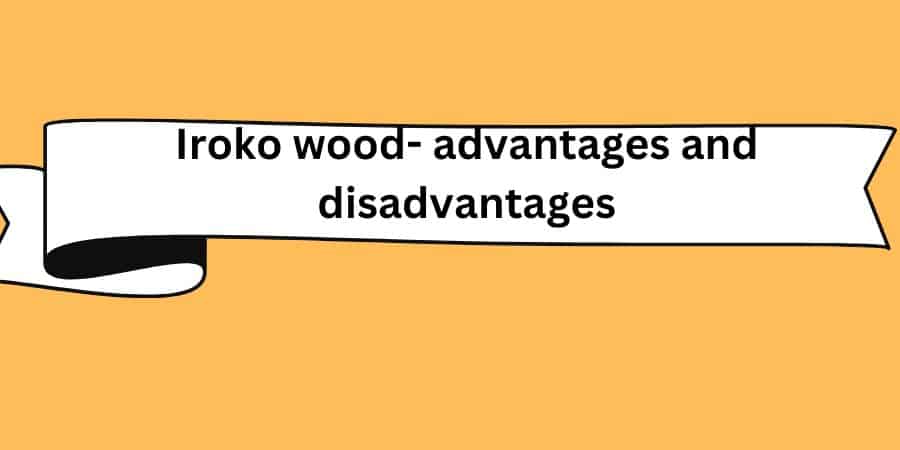The iroko tree is a tropical hardwood tree that’s native to West Africa, specifically in countries like Nigeria, Ghana, and Cameroon. It’s a large tree that can grow up to 50 meters tall and have a trunk diameter of up to 2 meters!
Table of Contents
Iroko vs other similar woods
| Wood Species | Density (kg/m³) | Janka Hardness (N) | Durability Class | Decay Resistance | Workability | Stability |
|---|---|---|---|---|---|---|
| Iroko | 660 – 1090 | 1260 | 1 (Very durable) | Good | Good | Moderately Stable |
| Teak | 630 – 720 | 1155 | 1 (Very durable) | Good | Good | Moderately Stable |
| Cumaru | 880 – 1130 | 3540 | 1 (Very durable) | Good | Moderate | Moderately Stable |
| Merbau | 670 – 915 | 1925 | 1 (Very durable) | Good | Moderate | Moderately Stable |
| Ipe | 1050 – 1300 | 3680 | 1 (Very durable) | Good | Difficult | Moderately Stable |
Note: Density and Janka hardness values can vary depending on the source and location of the wood.
As shown in the table, iroko wood is similar in density and durability to teak and merbau.
However, cumaru and ipe are denser and harder than iroko, but they can be more difficult to work with.
In terms of stability, iroko is moderately stable, which means it can expand and contract moderately with changes in humidity and temperature. Overall, iroko wood is a good choice for outdoor furniture and construction projects due to its strength and durability.
Advantages:
- Durability: Iroko wood is highly durable and has a high resistance to decay and insect damage. This makes it an ideal choice for outdoor use, including decking, cladding, and furniture.
- Workability: Iroko wood is relatively easy to work with, which means it can be cut, shaped, and sanded without too much difficulty. This makes it a popular choice for carpentry and construction projects.
- Moderate stability: Iroko wood has a moderate level of stability, which means it can handle moderate fluctuations in temperature and humidity without warping or cracking. This makes it suitable for use in areas with variable climates.
Disadvantages:
- Density and hardness: Iroko wood is not as dense or hard as some other similar woods, such as cumaru and ipe. This means it may not be as suitable for certain heavy-duty applications, such as flooring in high-traffic areas.
- Maintenance: While iroko wood is moderately stable, it can still experience some movement in response to changes in temperature and humidity. This may require additional maintenance and care, such as regular sealing or staining to protect the wood.
- Cost: Iroko wood can be relatively expensive compared to other similar woods, such as teak and merbau. This may be a consideration for some projects where cost is a concern.
Intresting facts about Iroko tree
- Iroko wood is a tropical hardwood that’s native to West Africa, and is commonly found in countries like Nigeria, Ghana, and Cameroon. It’s also grown in other parts of the world, such as South America and Asia.
- The iroko tree can grow up to 50 meters tall, which is about as tall as a 15-story building! It can also have a trunk diameter of up to 2 meters.
- One of the most unique things about iroko wood is its color. It has a beautiful golden-brown hue that’s often compared to teak. Over time, the wood can darken and develop a richer, more reddish-brown tone.
- Iroko wood is prized for its durability and resistance to decay and insect damage. This makes it a popular choice for outdoor use, such as in decking, cladding, and furniture.
- In addition to its use in construction and outdoor furniture, iroko wood is also commonly used in boatbuilding and for making musical instruments such as drums and guitars. The wood’s resonance and tonal qualities make it an excellent choice for these applications.
- Iroko wood is sometimes called “African teak,” although it’s not actually related to teak wood. It’s also known by other names, such as kambala and mvule.
- The iroko tree is considered to be a sacred tree in some African cultures, and is believed to have spiritual powers and medicinal properties.





